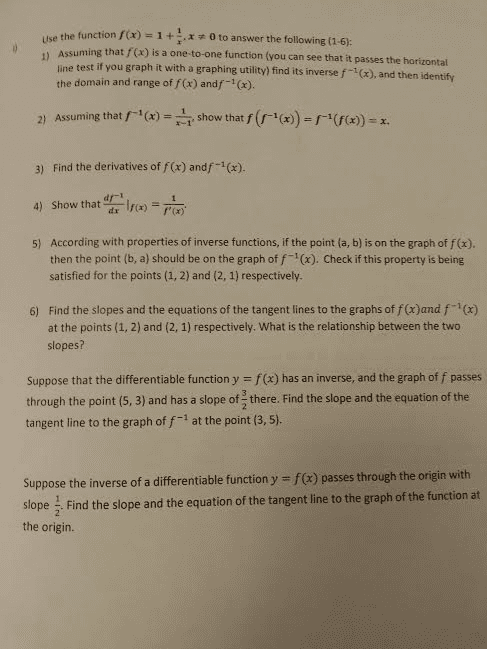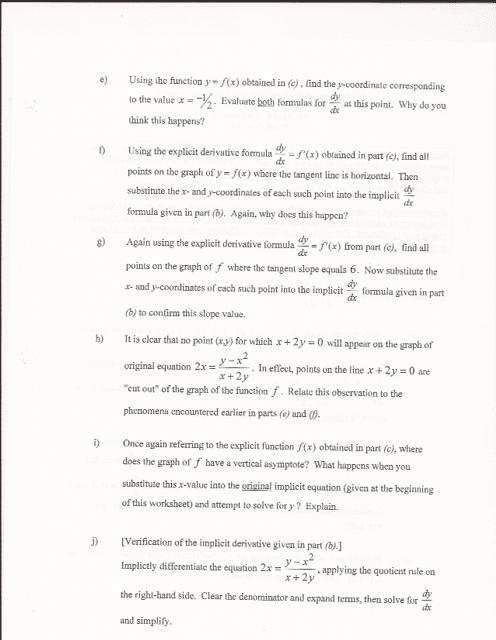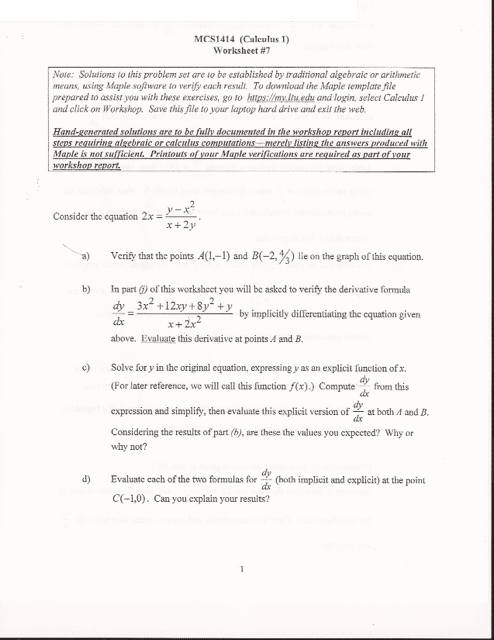MATH 101 Study Guide - Midterm Guide: Power Rule, Implicit Function, Product Rule
61 views12 pages
30 Apr 2016
School
Department
Course
Professor
Document Summary
The derivative of a function, f, at a number, a, is f"(a), where f"(a) = . As h 0, you are going to get the slope at point a (or x in this situation). The process of finding the derivative is called differentiation. Tricks: look for points on the original graph that have a slope of zero and map those out on the derivative graph b. If there are any sharp corners, vertical lines (means + or - slope) or points of discontinuity, then that x value will have an asymptote at it or an open dot. Definition: a function is differentiable at a if f"(a) exists as a number and is differentiable on an open interval (a,b) if it is differentiable at every point in the interval. Rules: derivative of a constant: f(x)= c, power rule: f(x)= cxn. Leibniz: f"(x) = 0 f"(x) = cnxn-1: derivative of a sum: f(x)+g(x, product rule: (fg)" = f"g +fg", quotient rule:




